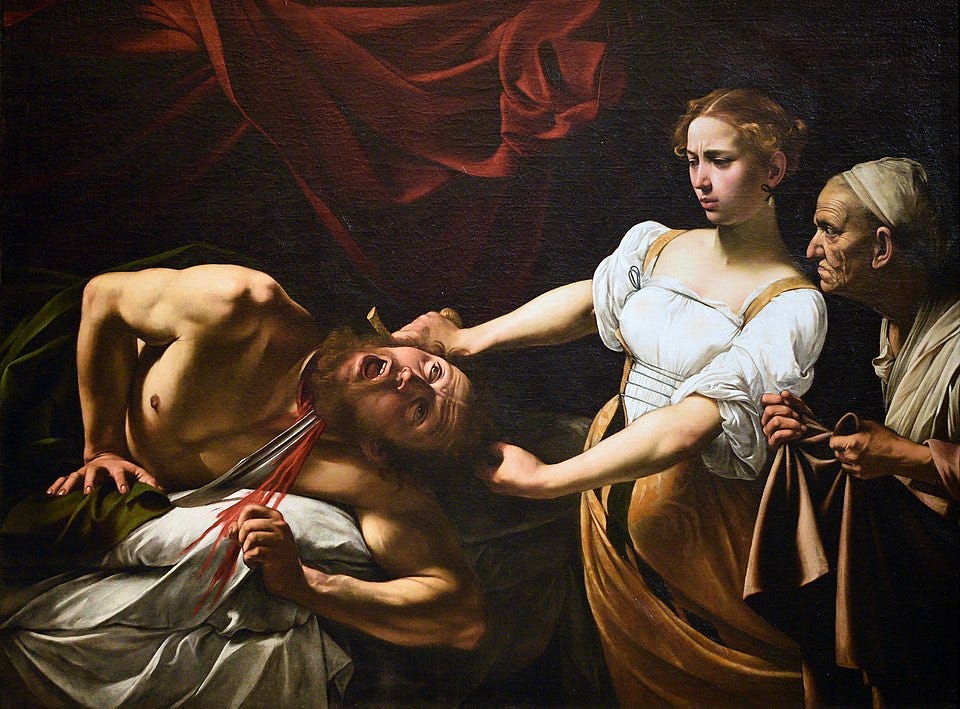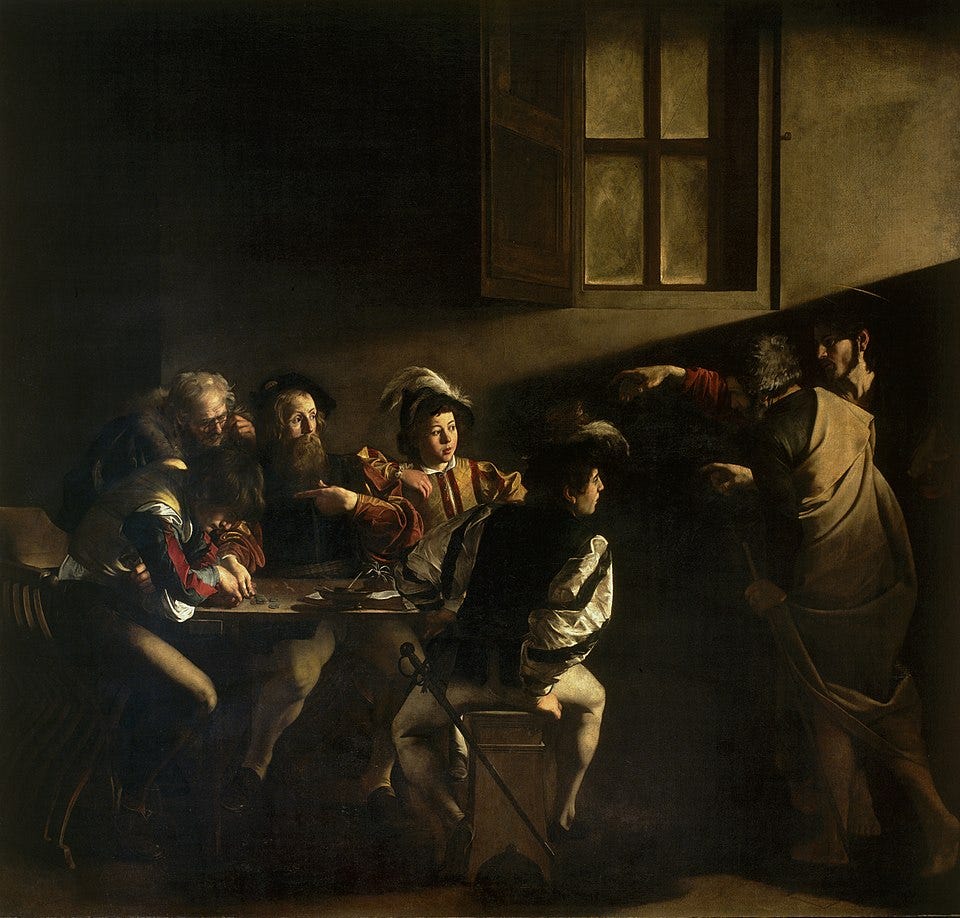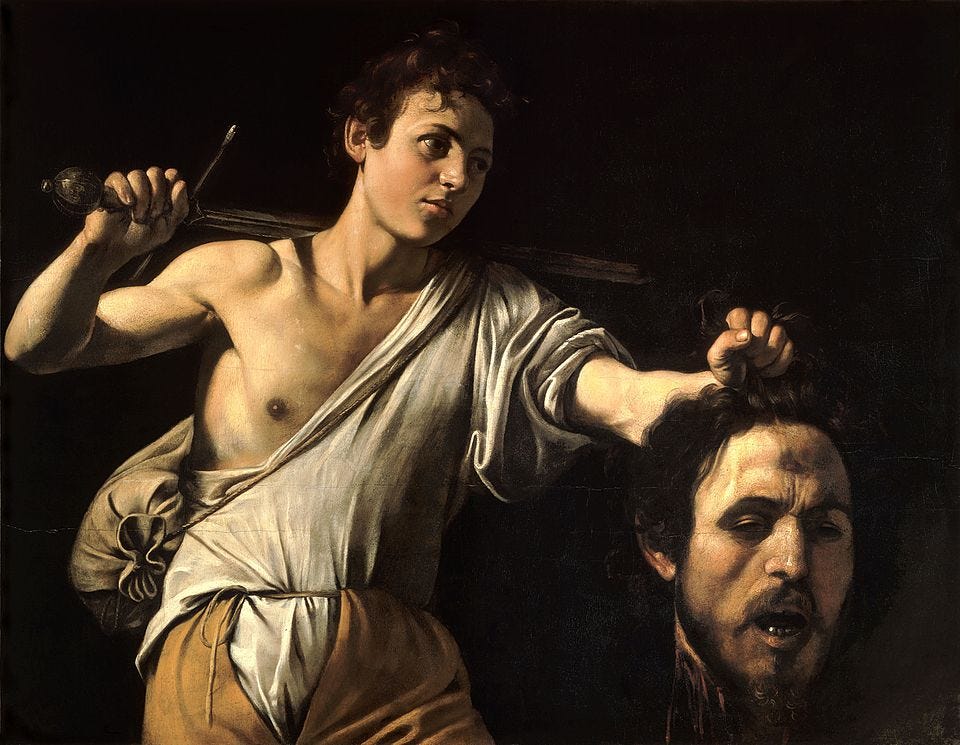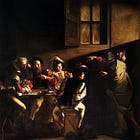The Beautiful Contradiction at the Heart of Caravaggio's Work
Investigating the powerful use of contrast and duality within Caravaggio’s art
At the dawn of the 1600s, Europe was caught in a storm of religious division and cultural change. The Catholic Church, rocked by the Protestant Reformation, responded with the Counter-Reformation, a campaign to renew faith through spectacle, emotion, and clarity. Art became a battleground for the soul. In this climate appeared Michelangelo Merisi da Caravaggio. Born in 1571 near Milan, Caravaggio brought a radical new vision and helped ignite the Baroque movement. His paintings surge with intensity and vivid contrast: violence and tenderness, darkness and divine light. This tension of opposites appears throughout his works.
(Disclaimer: moderate violence depictions ahead)
Sacred scenes made brutally real
Unlike the idealized figures of earlier Renaissance art, Caravaggio painted saints, martyrs, and apostles with the faces of ordinary people. He gave them dirty feet, wrinkled hands, and weathered skin. Many of his models came not from religious circles, but from Rome’s streets: beggars, prostitutes, and laborers.
This approach aligned with the Church’s desire to reach the common man. Caravaggio showed that holiness could dwell in the lowliest. Yet his realism could be deeply unsettling. In The Martyrdom of Saint Matthew, based on the legend of the saint’s murder during mass, Matthew reaches upward as an assassin moves in to strike. A burst of light cuts through the darkness as onlookers scatter or stare in frozen horror.
In Judith Beheading Holofernes, drawn from a biblical tale of resistance, a young Jewish woman decapitates an Assyrian general as red splashes down the bedsheet. Her face is clearly concerned, showing that she does not revel in the act.
These scenes are not glorified, but rendered with emotional gravity and respect for the complex, often painful truths they represent.
Light as revelation and judgment
Caravaggio’s use of light was revolutionary. He painted in chiaroscuro (strong contrasts between light and dark) to guide the viewer’s gaze and charge each scene with tension. But this was more than technique. Light in his paintings often feels like a divine intrusion, cutting through darkness to expose truth. In The Calling of Saint Matthew, a narrow beam slices across a dim tavern as Christ silently points to Levi, the tax collector, who pauses mid-gesture, caught between worlds. The moment is subtle; a moral reckoning.
Conflict Transformed Into Art
Caravaggio’s own life mirrored the conflict in his art. He was brilliant, yet volatile and violent. Court records detail his crimes and behaviour: brawls, arrests, and even a murder. Forced to flee Rome, he painted while on the run, from Naples, to Malta, to Sicily. His works from exile are darker and more haunted. David with the Head of Goliath is particularly striking: the severed head of Goliath is widely believed to be Caravaggio’s self-portrait, held by a young, sorrowful David. It is likely a confession of his own inner turmoil.
A Legacy of contradiction
Caravaggio died in 1610 under mysterious circumstances at the age of 38. For centuries, his reputation faded, eclipsed by other Baroque artists like Rubens and Poussin. But today, his influence is undeniable. Modern cinema, photography, and visual storytelling owe much to his stark lighting and psychological realism. More importantly, his work speaks to the enduring human struggle between darkness and light. Caravaggio refused to separate the sacred from the profane, the sinner from the saint. His paintings confront viewers not with answers, but with new questions about faith, violence, mercy, and truth. In their raw intensity, they remind us that beauty can exist in the darkest places and most profound contradictions.






